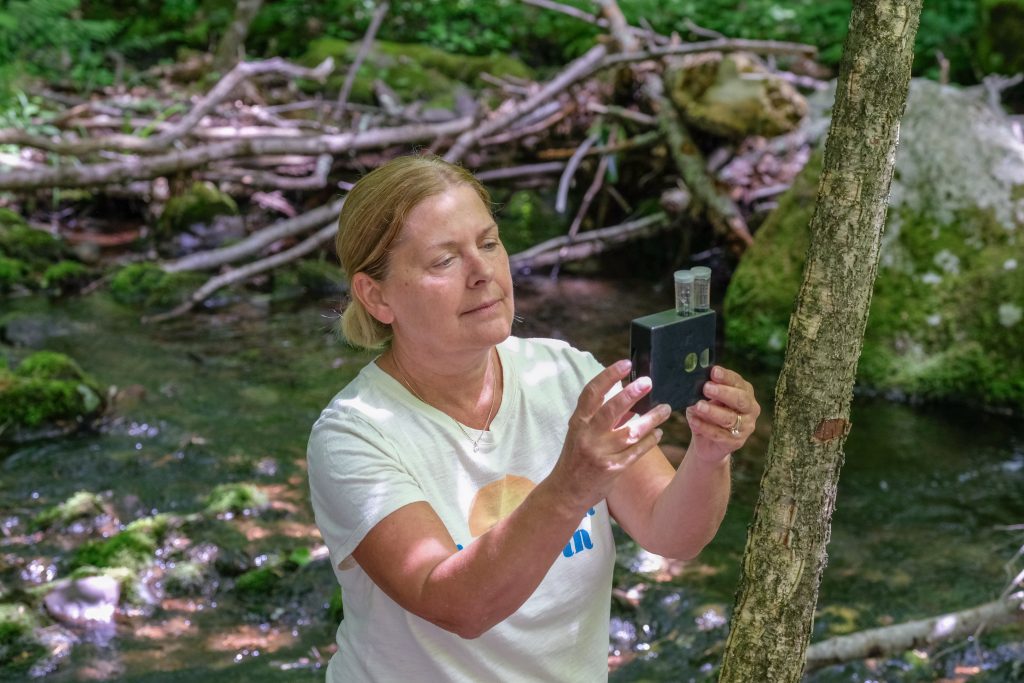
Stream watchers vigilantly monitor the health of Pocono waterways
| July 15, 2024
On a warm June day amid the smell of pine trees, Betty Fetherman and Krista Paolucci stood near Rattlesnake Creek in the Poconos in Pennsylvania.
Their afternoon was not one of leisure or fishing, however. Instead, they were there to work on behalf of the stream.
In Monroe and Pike Counties in Pennsylvania, the rivers and creeks in the Brodhead Creek and Cherry Creek watersheds are closely monitored by a network of “stream watchers” organized and trained by the Brodhead Watershed Association.
Paolucci, a Penn State Extension certified master watershed steward, a mayfly data logger, and a stream watcher for five years, said her children play in Mill Creek, which runs through her property.
She wants to ensure it stays clean.
“Protecting our water quality and understanding the quality of my water in my own backyard is very important to me,” she said.
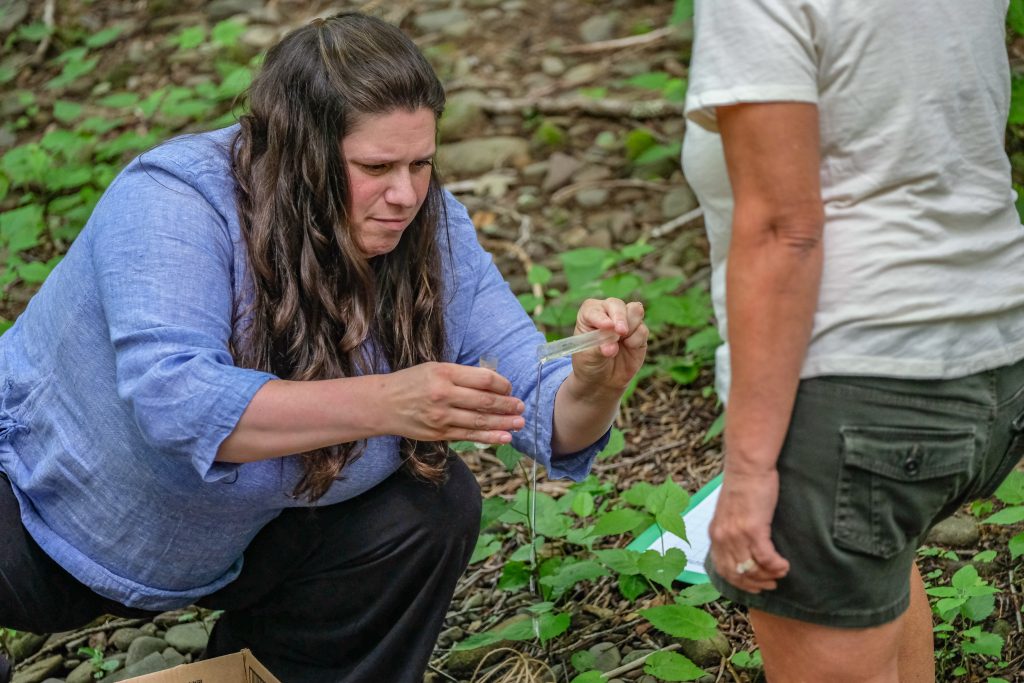
Keeping tabs on different measures
The number of stream watchers and sites tested fluctuates but the association generally has 50 volunteers who test 70 sites monthly. On this day, Fetherman and Paolucci took samples from Rattlesnake Creek and Mill Creek to test for pH and conductivity.
For safety reasons, testing is often done by lowering a receptacle into the water from a bridge spanning a creek, as it can be challenging to access waterways by foot. The receptacle is rinsed and re-rinsed before a final sample it taken. Samples are then poured into test tubes to analyze for Ph, temperature and electrolytic conductivity.
Changes in conductivity can indicate a stream has been exposed to some type of discharge, or contaminant. The 30 years of testing by the BWA has helped to set a baseline of conductivity.
Rivers and streams the group has monitored have seen an increase in salinity from time to time, something that Edie Stevens, a BWA founder and stream watch coordinator, attributes to salt used in winter road maintenance.
According to the Chesapeake Bay Foundation, road salts dissolve and separate into individual elements, including chloride, which can be harmful to drinking water and creatures inhabiting the waterways.
Turning such streams salty is a process known as “freshwater salinization syndrome.” According to an analysis of five decades of stream monitors at 232 U.S. Geological Survey river and stream monitoring sites across the country, “salt ions have increased 37 percent.”

Motivated by a desire to protect the Poconos
Fetherman became a stream watcher six years ago. She said she is motivated in part by a desire not to have to buy water.
“It’s about where we get our water, and that we’re going to have enough good water in the future,” Fetherman said.
And for Paolucci, it’s about more than just her property.
For her, stream watching and the years of water quality testing is also a question of the environment in her beloved Poconos.
She voiced concern about what she sees as the destruction of natural spaces to make way for warehouses that already have a strong foothold in the Lehigh Valley and are beginning to spread north.
“Now when you drive down Route 33, it’s warehouse after warehouse, after warehouse,” she said, adding, “The Poconos is such a special place, and we are desperately trying to maintain that beauty.”
“There is the esthetic,” Paolucci continued. “Do we want the Poconos to look like the Lehigh Valley? Does anyone remember what it used to look like? It was jaw-dropping beautiful. Now it’s concrete for as far as the eye can see.”
Concerns about runoff
Paolucci also stressed that the removal of the natural canopy and greenery around the waterways can only add to potential runoff into streams and groundwater.
“Putting up an impermeable surface creates a significant amount of runoff, and with that runoff, comes all the chemicals that are on those surfaces,” Paolucci said.
Chemicals often associated with such structures can include gasoline, diesel fuels, other petroleum products and coolant.
According to PennFuture, more than 30 percent of Pennsylvania’s waterways are already polluted or degraded, yet most of the waterways in the Poconos are designated Exceptional Value.
“The majority of our Exceptional Values streams are found in the Poconos, and it’s incredibly important for us to maintain that water quality,” Paolucci said.
There are construction methods designed to help mitigate runoff, including types of detention or retention basins. Such basins can be highly effective, though some have questioned their utility, especially during high-precipitation events, as they may become overwhelmed.
While those mitigation processes may help decrease runoff, the clearing of land and forests for development can remove the natural water filtration processes, Paolucci said.
“Taking away the natural canopy, which absorbs a lot of the rainfall, and then the native [plant] species that live here absorbs even more contaminants, and you replace that with a concrete structure, there’s no comparison,” she said.
For Paolucci and Fetherman, who are streamside at least monthly, it’s volunteerism with a passion.
“You connect with nature, and to me that’s very important,” Fetherman said. “Just getting out and seeing the beauty around us, the clean water and the animals. It is rewarding to know that we’re keeping an eye on the streams.”
Paolucci, who has lived in the area for 40 years, said, “I want to see the Poconos stay wild, and I think the people who live here and visit here feel the same.”
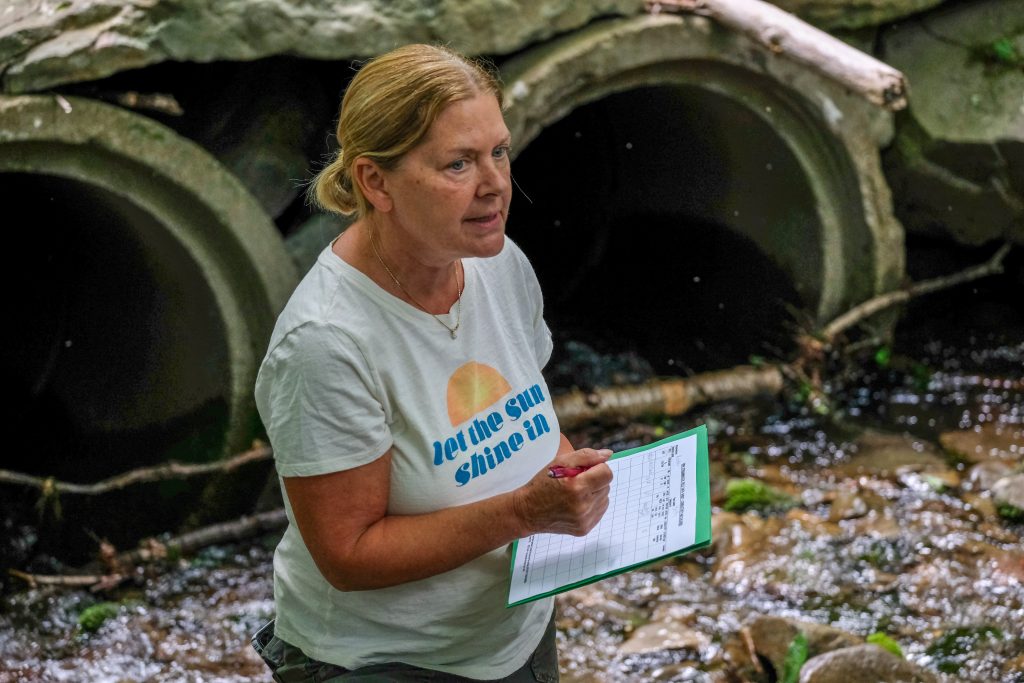

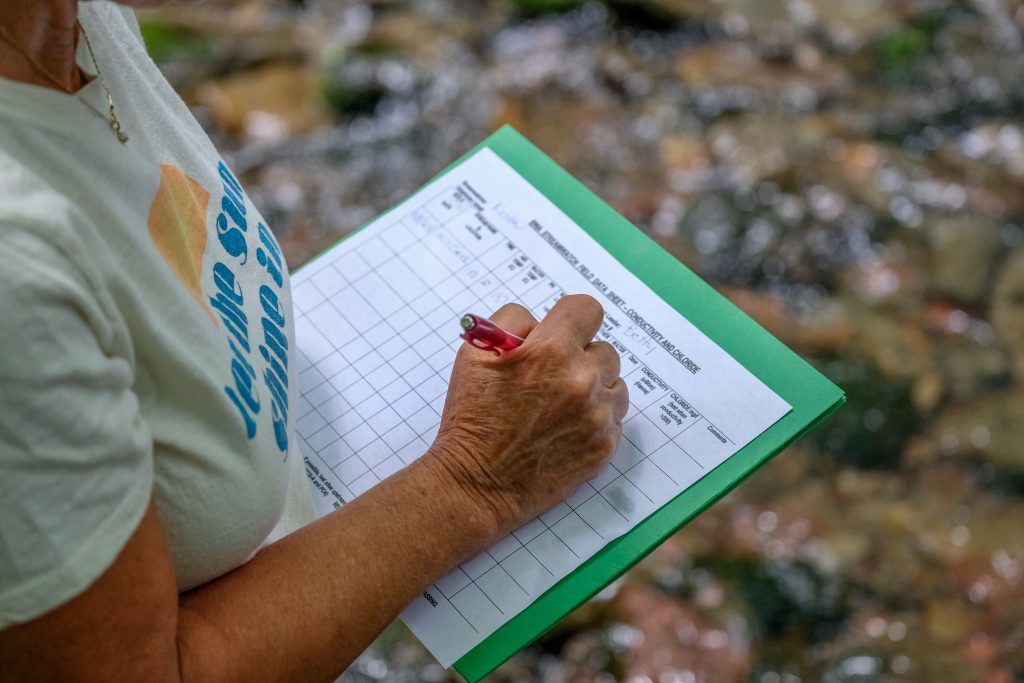
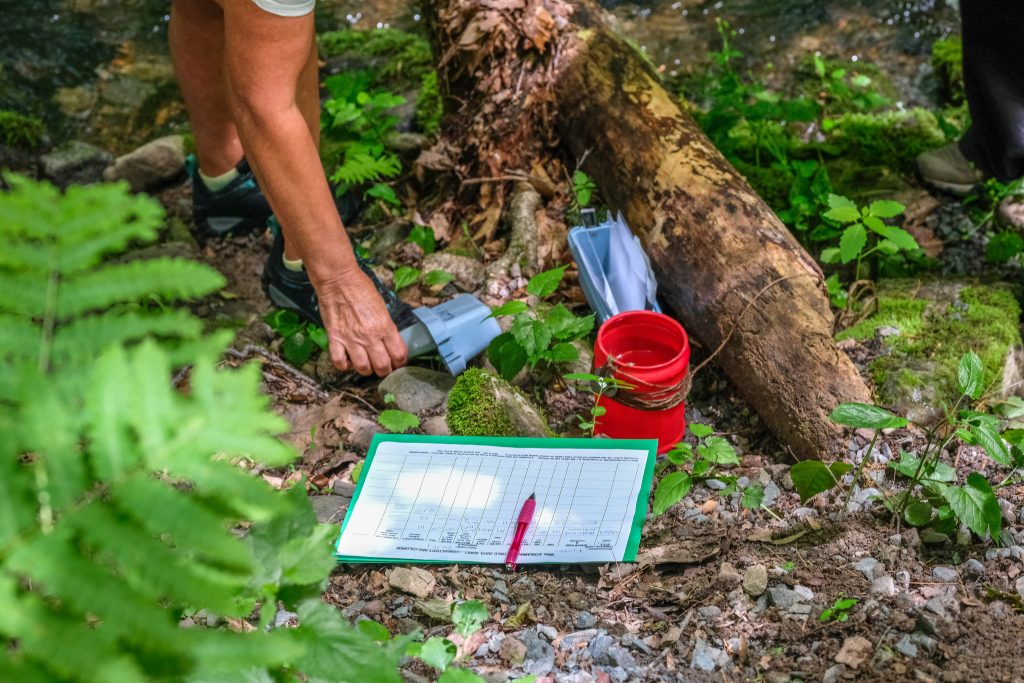









Great article. Protecting our water systems is critical.